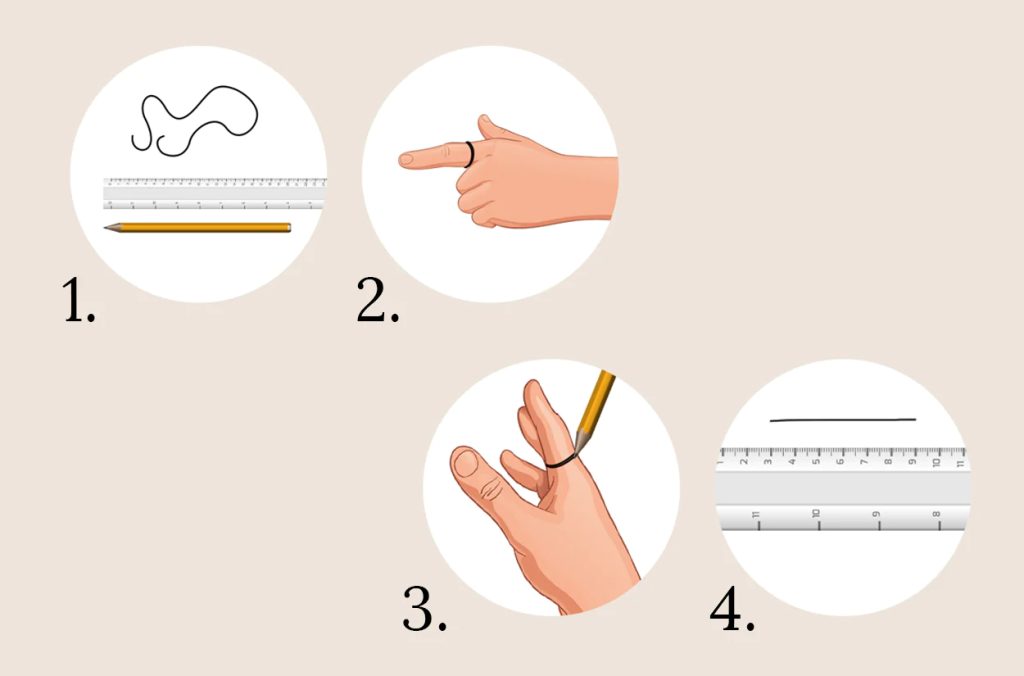Purchasing a ring for a child isn’t merely about selecting a charming design. The crucial element often overlooked is the ring size. Accurate sizing ensures a comfortable fit and prevents the ring from slipping off, a significant concern when it comes to children’s jewelry. In this article, we will delve deep into the essential tool for this task – the Kids Ring Size Chart.

Importance of Accurate Ring Sizing for Kids
Accurate ring sizing is important for everyone, including kids. Getting the right size for a ring ensures that it fits snugly and comfortably on the finger, without being too tight or too loose. For kids, this is especially important as their fingers are still growing and developing. If a ring is too tight, it can cause discomfort and even restrict blood flow to the finger. On the other hand, if a ring is too loose, it can easily fall off and get lost. Accurate ring sizing can also prevent the need for resizing or replacement, which can be costly and time-consuming. Overall, ensuring that kids have the right ring size is crucial for their comfort, safety, and peace of mind.
| AGE RANGE | DIAMETER OF RING (MM) | RING SIZE US & CANADA | UK / AUSTRALIA RING SIZE |
| Baby | 12 mm | 1/2 | A |
| Baby-Toddler | 12.5 mm | 1 | B |
| Baby-Toddler | 12.9 mm | 1 1/2 | C |
| 1 to 3 years | 13.3 mm | 2 | D |
| 3 to 5 years | 13.7 mm | 2 1/2 | E |
| 5 to 7 years | 14.1 mm | 3 | F |
| 7 to 9 years | 14.5 mm | 3 1/2 | G |
| 9 to 10 years | 14.9 mm | 4 | H |
| 8 to 11 years | 15.3 mm | 4 1/2 | I 1/2 |
| 9+ | 15.7 mm | 5 | J 1/2 |
| 9+ | 16.1 mm | 5 1/2 | K 1/2 or L |
| 10+ | 16.5 mm | 6 | M |
| 10+ | 16.9 mm | 6 1/2 | N |
| 11+ | 17.3 mm | 7 | O |
Measuring Kids’ Ring Size at Home
Tools You Need
To measure your child’s ring size at home, you’ll need a piece of string, a ruler and of course Our Kids Ring Size Chart for comparison.
Step by Step Guide
- Wrap the string around your child’s finger where the ring will sit.
- Mark the point where the string overlaps.
- Straighten the string and measure the length up to the marked point using the ruler.
- Compare this measurement with the Kids Ring Size Chart to find the corresponding size.

Tips for Choosing the Right Ring Size for Kids
Consider Growth
Children grow rapidly, and so do their fingers. It’s wise to choose a size that provides a little room for growth, ensuring the ring’s usability for a longer time.
Comfort is Key
Comfort should always be a priority when selecting a ring size. It should fit snugly but not too tightly. If the ring leaves an imprint or causes any discomfort, it’s too small.
Categories
FAQ’s
You can determine your child’s ring size by measuring the circumference of their finger with a piece of string or paper and then comparing it to a kid’s ring size chart.
The average ring size for children can vary greatly depending on their age and growth. Typically, a child aged between 4 to 7 might wear a ring size 3-5.
Use a kid-specific ring size chart. These charts are designed to consider the smaller sizes required for children’s fingers and can provide more accurate results.
Yes, children’s ring sizes are typically smaller than adults’. Adult ring size charts start where kid’s charts end.
Wrap a piece of string or thin strip of paper around your child’s finger, mark where it overlaps, and measure the length. Compare it to a ring size chart to determine the ring size.
A standard kid’s ring size chart will have ring sizes suitable for children, usually starting from size 0 (or 1) to around size 4 or 5, corresponding to the finger circumference in millimeters.
Take the measurement of your child’s finger and compare it with the chart. The size that corresponds to the circumference of their finger will be the ring size.
Use an international ring size conversion chart. These charts will have ring sizes listed for different regions, allowing you to easily convert between them.
Measure your toddler’s finger and choose the closest ring size from the kid’s ring size chart. It’s better to choose a size that’s slightly loose than one that’s too tight.
People Also Ask
Avoid measuring when their hands are cold or they’re not at rest, as fingers can contract. Always measure more than once to confirm the size.
Measure your child’s finger at a time when they’re relaxed and their hands are warm. It’s better to err on the side of a larger size for comfort.
The string or paper strip method is easy and effective. Remember to measure the finger more than once for accuracy.
Children grow quickly, so it’s wise to check their ring size at least every six months.
As children grow, their ring size will generally increase. Regular measurements are important to keep up with their growth.
If your child’s ring size falls between two sizes, opt for the larger one to ensure it won’t be too tight.
Choose adjustable rings or rings with a bit of room to grow. If you’re purchasing a non-adjustable ring, opting for a slightly larger size is advisable.
Yes, many rings can be resized. However, it depends on the material and design of the ring.
You could use a ring they currently wear and compare it to a ring size chart. Another way is to subtly measure their finger while they’re asleep or distracted.
Ring size doesn’t directly correspond to age as children grow at different rates. It’s always best to measure the child’s finger for an accurate size.

